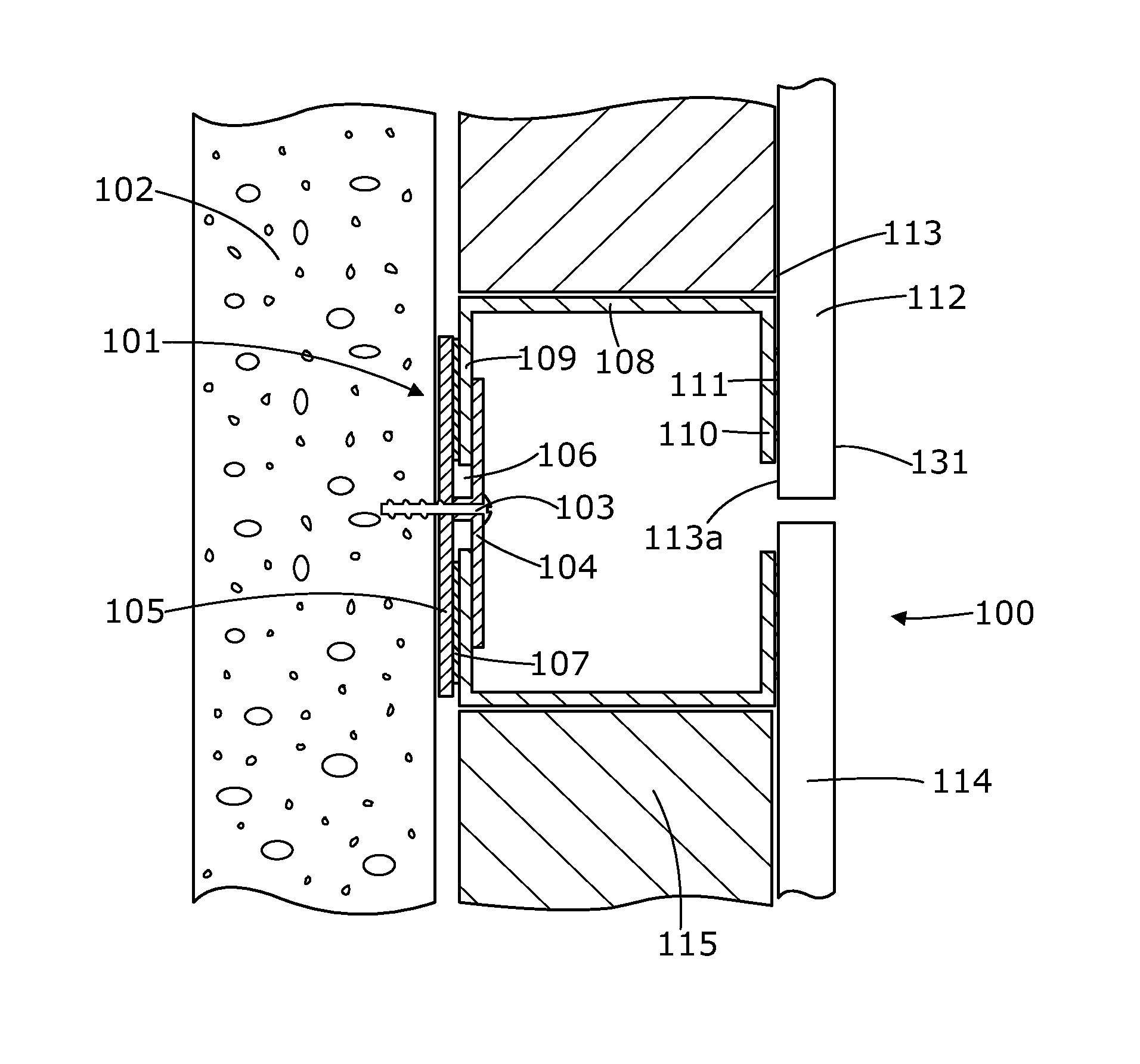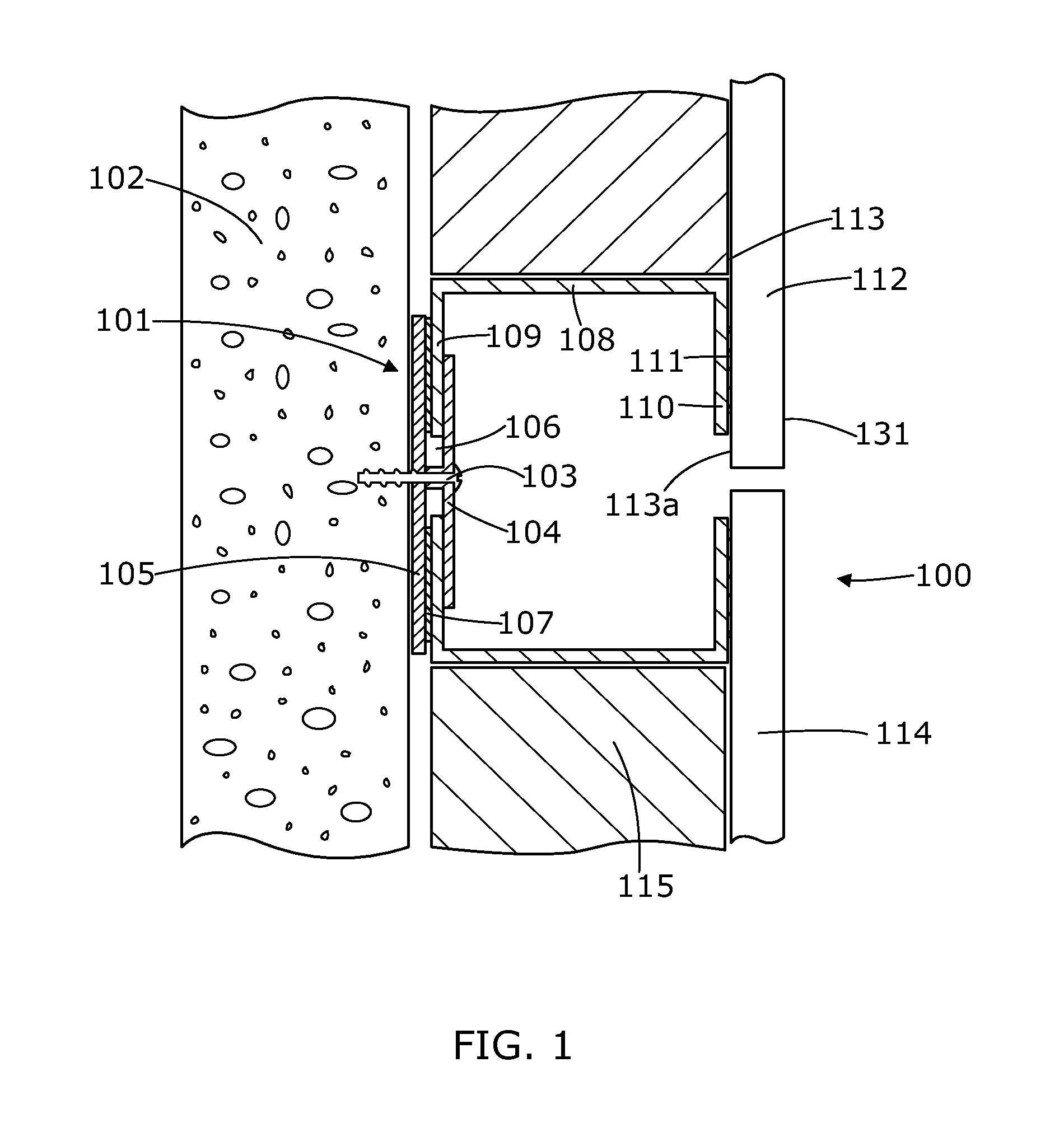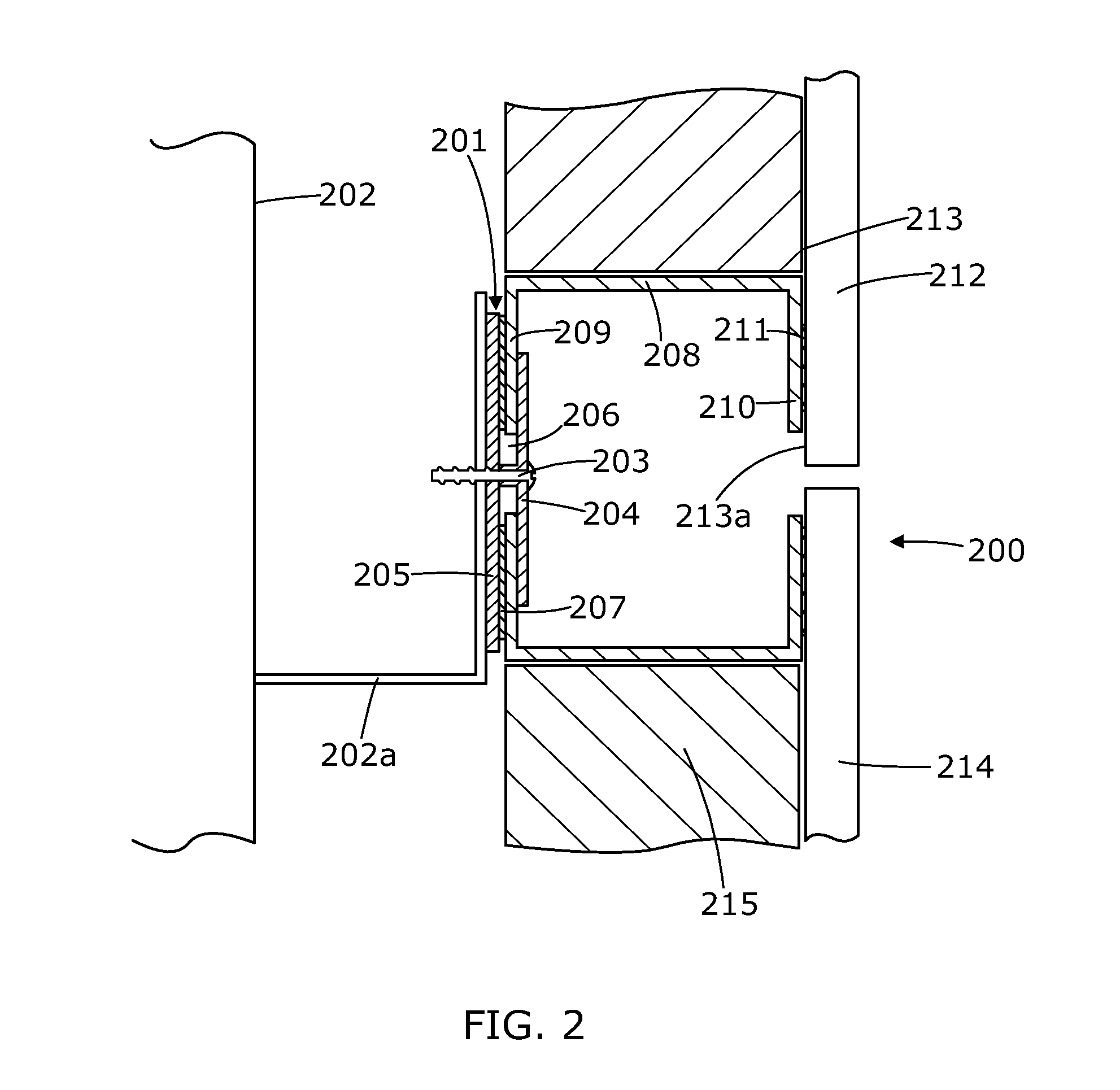Facade
a facade and cladding technology, applied in the field of cladding systems, can solve the problems of reducing thermal performance, reducing and little or no thermal insulation performance of cladding, and achieve the effect of increasing the resistance of cladding and being easy to install
- Summary
- Abstract
- Description
- Claims
- Application Information
AI Technical Summary
Benefits of technology
Problems solved by technology
Method used
Image
Examples
embodiment 500
[0094]In FIG. 5, there is shown a further embodiment 500 of the façade system of the invention. This embodiment of the invention differs from those of FIGS. 1 and 2 in that the retaining element 501 is connected to the structural building substrate 502 by means of an optional structural spacer element 520.
[0095]A structural support element 516 is installed into the structural building substrate 502. An optional spacer element 519 may then be placed over each structural support 516 before structural spacer elements 520 are mounted onto the structural support element 516. The optional spacer element 519 comprises, for example, a rubber or polymeric washer. The optional spacer element 519 functions to improve the ease of tightening of structural spacer element 516.
[0096]In the embodiment shown the structural support element 516 is integrally formed with the structural spacer element 520. Optionally, the structural support element 516 and structural spacer element 520 are preassembled t...
embodiment 800
[0107]FIG. 8 shows a cross-sectional view of a further embodiment 800 of a thermally efficient façade system of the invention. In this embodiment of the invention, panel retaining element 801 comprises a “T” section and channel 806 is formed between support plate 823 and panel retaining element 801. Panel retaining element 801 is fastened to support plate 823 by mechanical fastener 803. Support plate 823 is attached to structural spacer element 820 by means of the mutually engaging threaded portion 825. As before the structural spacer element 820 is secured to the structural support element 816 by mutually engaging threaded portions 521. The structural support element 816 is secured in position by means of a supporting bracket 817 which is secured in position by securing means 818. Insulating material 815 is disposed between the supporting bracket 817 and the supporting plate 823. Building wrap 822 is provided on the face of the insulating material 815 remote from the building subst...
PUM
 Login to View More
Login to View More Abstract
Description
Claims
Application Information
 Login to View More
Login to View More - R&D
- Intellectual Property
- Life Sciences
- Materials
- Tech Scout
- Unparalleled Data Quality
- Higher Quality Content
- 60% Fewer Hallucinations
Browse by: Latest US Patents, China's latest patents, Technical Efficacy Thesaurus, Application Domain, Technology Topic, Popular Technical Reports.
© 2025 PatSnap. All rights reserved.Legal|Privacy policy|Modern Slavery Act Transparency Statement|Sitemap|About US| Contact US: help@patsnap.com



